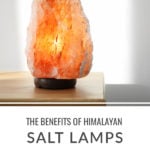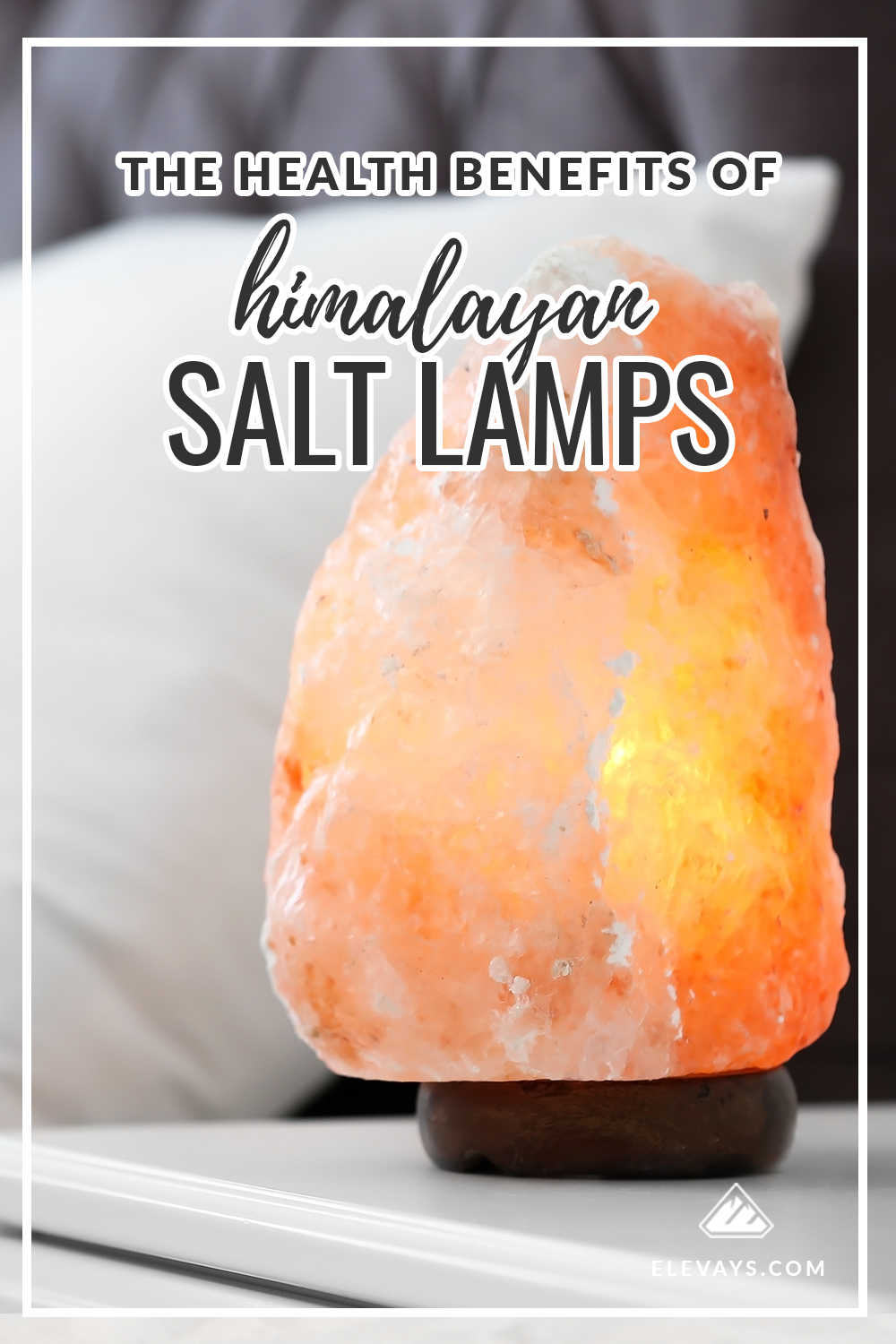Do you remember when you were a little kid and lava lamps were the coolest bedroom accessory? Just sitting and staring at the beautiful swirls of colors sent you to another world. A world where all your anxious feelings seemed to melt away.
That was the power of the lava lamp. It’s really too bad that lava lamps lost their popularity. But when one fad goes out the window, another is bound to come in. But the one we’re talking about today is more of a long-lasting lifestyle accessory.
There’s a new lamp in town, and you’ve probably heard about it. Himalayan salt lamps are everywhere these days. And with the rising popularity, there are a lot of companies jumping on board just to make a profit. That’s why we’re going to learn how to make sure your Himalayan salt lamp is authentic…if you do decide to get one.
TRUTH BOMB:
You’re
Already killing it!
If You Were More Consistent With Your Wellness Routine, You’d Be Unstoppable.
If you’re skeptical of salt lamps, you’re not alone– I was too at first. After this article, I think I may just convert you to a salt lamp lover. I’m going to break down Himalayan salt lamps, their benefits, facts and myths, and fake vs. real. But before we get to the checkout counter, let’s start with the basics.
What is Himalayan Sea Salt?
True pink Himalayan sea salt comes from the deep undergrounds of Pakistan on the edge of the Himalayan Mountains. It has a light-pink sometimes orange-ish, crystal color. Pink salts are rich in vital minerals and nutrients like copper, magnesium, calcium, iron, and potassium. Not only are these minerals what give Himalayan sea salt its color but they are also the reason there are so many Himalayan salt lamp benefits.
What is a Himalayan Salt Lamp and How Does it Work?
So now that you get the gist of what pink Himalayan sea salt is let’s get into how the lamp itself works. Two main parts make a Himalayan salt lamp what it is: the salt and the heat.
A salt lamp is typically a block of rock salt with a hollowed-out bottom space where a light bulb or heating element goes. While the light from a bulb generates a warm ambiance, the heat works to warm the salt particles, keeping the crystals dry, allowing them to release negative ions. The heat also locks in water molecules from the air (which carry pathogens and other toxins).
The salt, on the other end, works its magic in a few different ways. For starters, salt in general is anti-inflammatory and antibacterial. It can loosen mucus, remove pathogens, and reduce immune system oversensitivity (1).
Salt is also naturally hygroscopic meaning that it attracts water molecules to itself. The theory goes that a salt lamp attracts water molecules in the air (which ultimately hold allergens, bacteria, and other pollutants). The heat then dries out the water holding the harmful particles to the lamp. Is this making sense so far?
One of the controversial properties of a Himalayan salt lamp is its ability to emit a small amount of negative ions. Because salt generates negative ions, many people believe that a Himalayan salt lamp can combat radiation, increase oxygen flow, and protect against germs.
According to Pierce J. Howard, Ph.D., author of The Owners Manual for the Brain, negative ions protect against germs in the air, helping to reduce irritation caused by various particles that make you sneeze, cough, or have throat irritation. (2). This is why one of the main reasons people love Himalayan salt lamps is because of their ability to help with asthma and allergies.
And this makes sense if you think about it because one of the main sources of natural negative ions comes from running water. Have you ever been around a waterfall or on the beach and immediately felt like you could breathe better? I’m going to go a little more into this later on, so just hang on and keep reading- because the next part is important.
If you’re looking to reap Himalayan salt lamp benefits, then the number one thing to understand is that not all salt lamps are created equally. Just like purses and sunglasses, there are some hoax salt lamps out there and unless you just want to sit and stare at the warm pink decor, then you need a pure, food grade, Himalayan salt lamp.
Himalayan Salt Lamps Benefits
There is a lot of controversy surrounding salt lamps. Do they actually work or is this a bunch of woo-woo? What even are the Himalayan salt lamp benefits?
You’ve heard some success stories with salt lamps being able to ease stress, depression, anxiety, allergies, and asthma- but is it a case of the placebo effect? Research would disagree. But purchasing a fake lamp may lead you to believe that. Today, I’m going to go into the top 5 benefits of an authentic Himalayan salt lamp.
Improves Air Quality and Purification
The first of the Himalayan salt lamp benefits is purification of indoor air. Indoor air pollution is the cause of a variety of health problems like asthma, digestive issues, and nervous system damage. Reducing indoor air pollutants is critical for overall wellness. One of the ways to keep indoor air pollutants at bay is with a Himalayan salt lamp.
Like I mentioned earlier, salt is a natural hygroscopic. A salt lamp can attract and absorb polluted water molecules from your indoor environment. Think VOC’s, biological pollutants, tobacco smoke, and synthetic fragrances. By eliminating these indoor air pollutants, you’ll see an overall improvement or elimination of health issues associated with poor air quality.
Eases Asthma and Allergies
One of the biggest sellers of salt lamps is their ability to calm asthma and allergy symptoms. You may be familiar with the new spa salt caves that seem to be getting a lot of attention. This is old news though.
Dating back in the 1800’s, Siberian salt mine workers displayed a significantly lower number of respiratory problems compared to non-salt miners. These days, the salt caves at spas recreate a Himalayan salt environment to help remove pathogens and open airways. Bring the spa experience home (at a smaller scale) with a salt lamp.
A Himalayan salt lamp’s ability to calm asthma and allergies is also backed by clinical studies and research. The Lung Institute uses salt therapy to relieve symptoms of lung disease and help patients breathe easier.
Clinical studies show successful results with salt therapy as well:
- 85% of mild and moderate asthma cases
- 75% of severe asthma cases
(1,2,3)
Reduce Electromagnetic Radiation
We come into contact with harmful EMFs daily. Everyday appliances like laptops, cellphones, microwaves, and television release positive ions. But it’s not just electronics. Toxic chemicals, pollen, pet dander, and mold are all examples of positive ion sources.
With the excessive EMF exposure, we are experiencing an increase in weakened immune systems, fatigue, headaches, stress, a rise in certain cancers, and more. Because Himalayan salt lamps emit negative ions, they can potentially neutralize electromagnetic radiation, balance these artificial frequencies, and ease any health issues that come with EMF exposure.
Boost Mood & Energy Levels
Remember at the beginning when I was talking about how staring at a lava lamp was like watching all your anxious feelings melt away? Well, a Himalayan salt lamp can do the same thing but only in a different way.
Once the negative ions reach the bloodstream, they’re thought to initiate biochemical reactions that increase serotonin production, helping to ease anxious feelings and stress. The negative ions also work to increase blood flow to the Brain and support energy levels.
Promote Relaxation & Restful Sleep
Chromotherapy or color therapy has always been a super interesting concept to me, and it comes into play when talking about how Himalayan salt lamps can promote relaxation. Color therapy says that soft orange and pink hues promote calming feelings and increase focus.
Many people also love Himalayan salt lamps for winding down at the end of the day. The lamp sets a relaxing ambiance helping balance physical and emotional energies and ultimately, helping you get better sleep.
(2)
Real vs. Fake Himalayan Salt Lamps
You can find a Himalayan salt lamp just about anywhere. Yes, that includes Amazon. But you don’t want to get tricked into buying a fake. If you’re looking for an authentic Himalayan salt lamp, then these are the things you need to look for:
Country of Origin
A pure, food-grade Himalayan salt lamp is going to be crafted from Pakistan salts. If there is no mention of Pakistan, then there is a good chance that the lamp maker is not talking about the country of origin for a reason.
Color
A true Himalayan salt lamp is going to be a dark orange, pinkish hue. If your salt crystals look lighter and have more of a white hue than pink or orange, that is a red flag. White crystal denotes inexpensive crystals, and just like with anything cheap chances are it’s going to be junk and you won’t reap the benefits you’re searching for.
Fragility and Durability
Himalayan salt lamps are extremely fragile. You can even lick or touch the lamp to feel or taste the tiny salts. (I do not recommend this though!) If you buy a durable salt lamp that goes unaffected after a fall or collision, there is a good chance it’s fake.
Moisture
Himalayan salt lamps are prone to sweating when exposed to moisture. If you have the real deal, you’ll see your lamp sweating at times. If you have it in your bathroom by the shower and your lamp is dry, that’s not a good sign.
Other red flags to look out for are super bright lights, poor return policies, and no therapeutic benefits.
Now that you have the down-low on Himalayan salt lamps, what are you thinking? Are you ready to purchase your own? What benefits are you most excited about? I would love to hear your thoughts, drop a comment below!
Sources:
- Axe, Josh. “7 Warning Signs Your Salt Lamp Is an Imposter.” Dr. Axe, 7 Aug. 2019, draxe.com/health/treatments/himalayan-salt-lamp/.
- “Himalayan Salt Lamp Benefits: Facts, Myths and How to Use Them.” Wellness Mama®, 2 Aug. 2019, wellnessmama.com/23569/himalayan-salt-lamp/.







READ the Latest
Health Habits
Health Habits
Longevity
Longevity